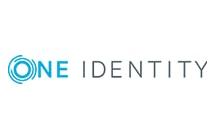One identity Survey shows hackers getting months to exploit old IT users’ accounts

One Identity, a in helping organisations get identity and access management (IAM) right, released study results showing significant gaps in how organisations manage accounts used to access IT infrastructure, systems, and data—gaps that could result in major security and compliance deficiencies.
The results of the study of more than 900 IT security professionals, conducted by Dimensional Research, spotlights how common security best practices—such as timely removal of access to corporate data and applications, dormant account identification, and role administration—continue to be a challenge and concern for organisations worldwide.
Most alarmingly, 70% of respondents express a lack of confidence that all former employees and employees changing roles are fully deprovisioned—or have their accounts changed or removed—in a timely enough manner. Therefore, their accounts remain open and available with active authorisation even after an employee changes roles or leaves the organisation.
Only 14% say they remove access for users immediately upon a change in HR status. Related findings point to concerning practices regarding management of dormant accounts. Only 9% are confident that they have no dormant accounts, only 36% are “very confident” they know which dormant user accounts exist, and a remarkable 84% confessed that it takes a month or longer to discover these dangerous open doors into the enterprise.
Best practices demand that access be removed for employee accounts that are no longer active. In the case where an employee changes roles, access needs to be altered to provide the new access and authorisation required for the new role and remove access that is no longer needed.

John Milburn
Oftentimes, the removal of no-longer-needed access is overlooked. When user accounts are not deprovisioned (often called dormant accounts), they are open invitations for disgruntled employees, hackers or other threat actors, who can exploit the accounts and gain access to sensitive systems and information, resulting in data breaches or compliance violations.
The user account access and management challenges are not limited to legacy systems and data, as they also are relevant for newer technologies such as file-sync-and-share services like Box and Dropbox. Only 14% of respondents report deprovisioning access to these accounts in a centralised/automated manner.
Other findings from One Identity’s Global State of IAM Study provide further evidence of the challenges organisations face with regard to managing employee access to IT resources:
- Only one in four are “very confident” that user rights and permissions in their organisations are correct for the individuals’ roles.
- 71% are concerned about the risk represented by dormant accounts.
- 97% have a process for identifying dormant users, but only 19% have tools to aid in finding them.
- Only 11% audit enterprise roles more frequently than monthly.
“Today, when employees leave an organisation or change roles within the same organisation, it’s more critical than ever that any access rights to the corporate network, systems, and data are revoked or modified to match their new status,” said John Milburn, president and general manager of One Identity.
“The overwhelming lack of confidence that organisations are doing this in a timely manner means they are still grappling with these same critical issues, offering up a gaping security hole for former employees, or hackers to exploit those identities, and wreak havoc for hours, weeks or even months to come. Those that don’t finally get this under control are more likely than ever to suffer a significant breach, and all of the resulting major impacts on reputation, brand, and stock valuation.”
Credential-Based attack vectors
One of the easiest ways for malicious outsiders, or even insiders, to gain access into an organisation’s IT network is by stealing user credentials such as user names and passwords. Once access is secured, a series of lateral movements and privilege escalation activities can procure access to the type of information and systems that are most coveted by bad actors, such as a CEO’s email, customer or citizen personally identifiable information, or financial records.
The more time inactive accounts are available to bad actors, the more damage can potentially be done, including data loss, theft and leakage, which could end up in irreparable damage to reputations, compliance violations, as well as possibly large fines and a significant drop in stock valuation.

Jackson Shaw
Solutions available today such as One Identity Starling Identity Analytics & Risk Intelligence (IARI), can help organisations reduce identity-related risks associated with improper user entitlements or access rights by providing significant visibility and insight. With proactive analysis and the ability to compare user entitlements, IARI can rapidly pinpoint situations where entitlements are out of norm, and pose an elevated risk.
“Exploitation of excessive or inappropriate entitlements remains a goldmine for threat actors who will then capitalise on access to gain a foothold in an organisation to steal data or inject malware.
This data is a wake-up call to organisations that they need sound solutions in place now, such as One Identity Starling IARI, that accelerate the deprovisioning of access, proactively discover dormant accounts, and help ensure appropriate access rights across the entire organisation and user population,” added Jackson Shaw, senior director of Product Management for One Identity.
Comment on this article below or via Twitter @IoTGN
